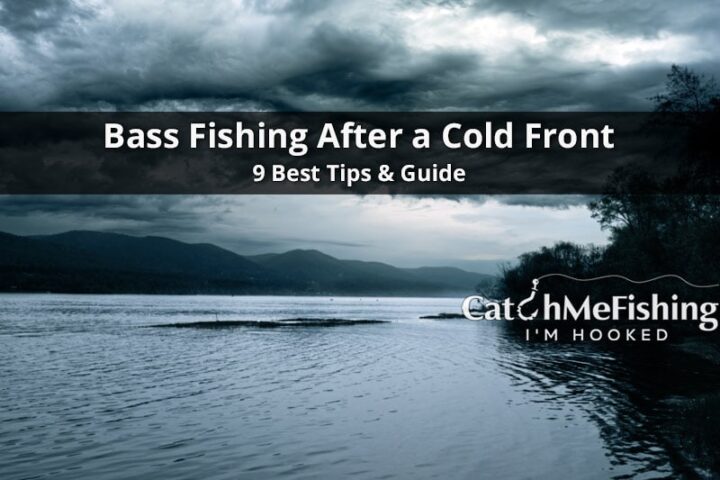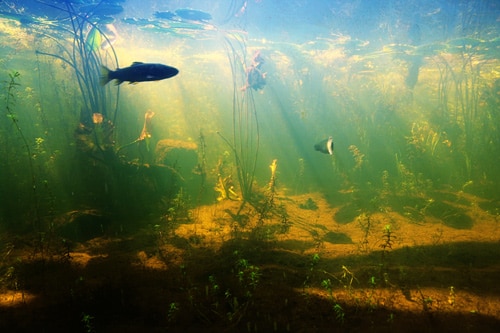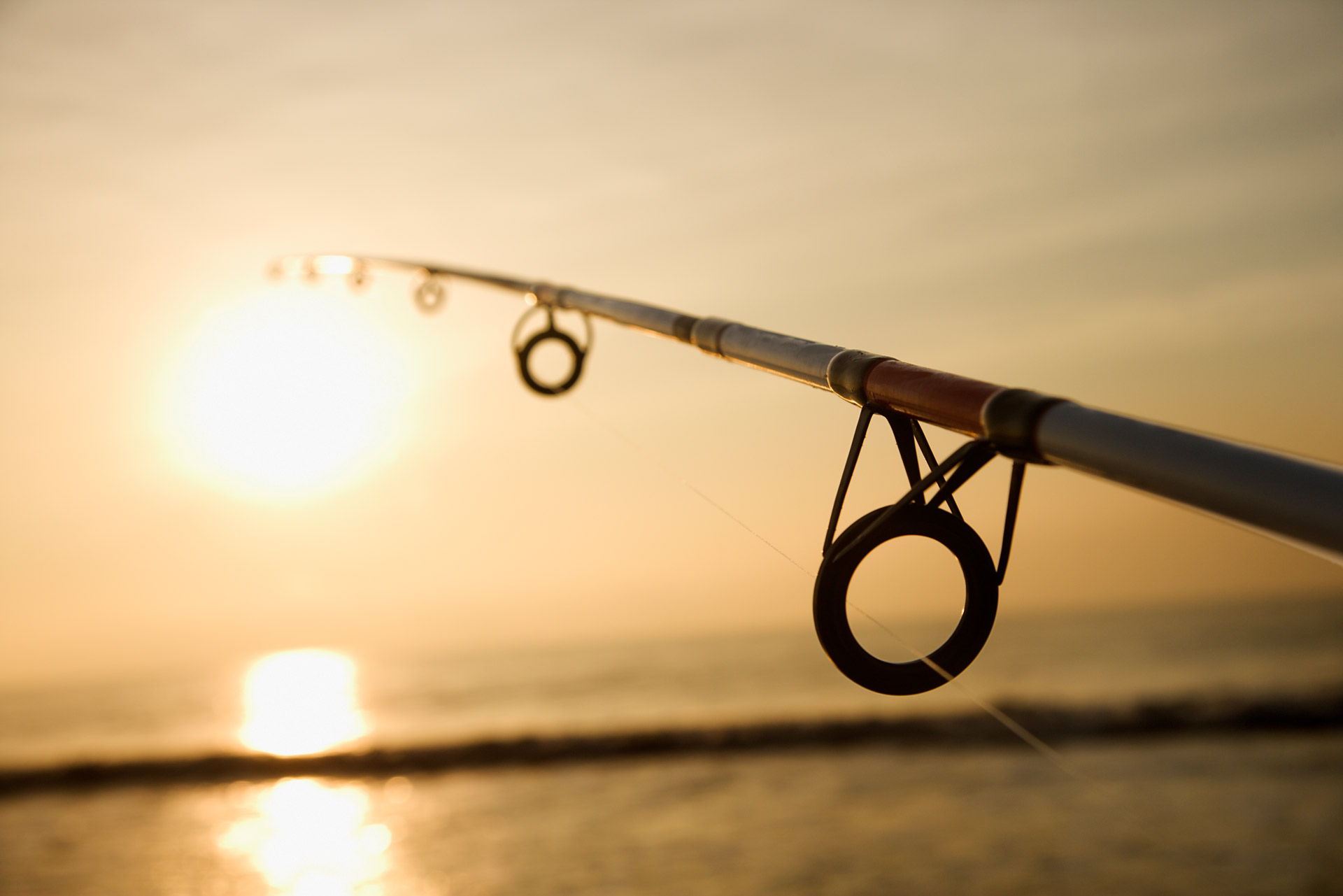9 Best Tips for Bass Fishing After a Cold Front

Cold fronts are one of the most misunderstood weather conditions that bass fishermen face. When a cold front comes through, it can completely change the fishing patterns for days or even weeks at a time.
This is why understanding what cold fronts do and how bass fishing after a cold front is affected is so important for your fishing success.
What is a Cold Front?
Cold fronts are, by definition, a boundary between cold air and warm air. They can be seen on satellite as a line of clouds that will form near the front.
A cold front is a change in wind direction that brings cooler air from a colder place like Canada or the Arctic into a much warmer area. This, along with rainy weather and dense fog, will bring about the cold front.
While it's not always easy to tell when one of these fronts comes through, there are some key signs you can look out for beforehand so you can plan your fishing trip accordingly. Precipitation will appear just before the cold front.
If you notice a sudden change in weather like thunderstorms, heavy rain, and strong winds. There is a high chance a cold front has arrived, and the temperatures of the bass waters will have lowered quite considerably.
Check the local weather for up-to-date information and advice on the cold front in your area and the places where you will be fishing for bass.
The effect cold fronts have on bass is that it lowers their metabolism rate, making bass less active and hungry for several days after the passage of the cold front. Bass fishing becomes much more challenging when there's no activity from these fish because they get spooked easily, and it makes your job even more challenging after the water temperatures have decreased during and after a cold front!
Fall cold front bass fishing can be exceptionally hard to catch bass as the weather and climate gets colder and the bass become lazy.
Bass fishing after a cold front
This article will give you 9 tips to help you catch more bass following a cold front. So you can catch those bass with ease!
Here are my 9 cold front bass fishing tips:
1. Monitor Water temperatures
Many anglers don't realize that water temperatures can also affect bass fishing after a cold front. If the water is cooler, then it's best to fish in the hottest time of the day. Try to fish the hours when the water temperature is the warmest, and the bass are more active, their metabolism rate will have increased again, and they will be more hungry.
If the water temperatures are higher, then you will have much more success. This will help you catch more bass before becoming less active due to cooler waters and higher metabolism rates.
2. Plan Your Fishing Trip
Plan your bass fishing trip after a cold front accordingly. If you want to catch more bass, then you will have to plan your trip out properly, so you hit the warmest time of the day.
Fishing in the coldest time of day is not recommended because your chances of catching bass are more limited. It can be difficult to fish when the temperature has dropped significantly below 60 degrees Fahrenheit.
Try to avoid weather conditions that will cause the water to drop the temperature even more. Avoid days with gusty wind and heavy rain after a cold front. The bass will be really off their food, and it will be tough to get bites.
If you plan your bass fishing trip after a cold front, you increase your chance of having a successful day's fishing.
3. Slow Down Your Fishing
Bass fishing can become very frustrating after a cold front if you are not patient enough to wait for bites - so slow your fishing speed down and fish in a controlled and calm manner.
This is especially important when dealing with a new or unfamiliar piece of water that has been affected by a cold front.
Whenever I fish for bass after a cold front, I slow my fishing down by at least half. Analyze your casts and pick the warmest spots. Don't rush, the bass are very slow after a cold front, and if you fish at your normal speed, you will not give the bass a chance to bite the bait as they move about at their slow, lazy pace.
If you are fishing for bass on a boat, try to slow the boat's speed down by at least a quarter. This will give you time to hold your bait in for longer and give you a bigger chance of success.
Don't expect to be getting bites like normal. Patience is the key to fishing after a cold front.
4. Find Warm Areas to Fish
When I fish for bass after a cold front, I always try to find the warmest areas possible. Bass like warmer water, so fishing in these places will give you your best chance at success.
The south side of docks and other structures are usually my go-to spots when it is cold outside because they offer protection from the wind.
Any area that is protected by the wind is my go-to spot to fish after a cold front. The water will not be as cold due to being protected from the wind.
The fish will be feeding in the warmest parts of the water, so finding that area of the lake will be your best chance of catching more bass.
5. Cast More
When fishing for bass after a cold front, you will need to cast more than usual.
Fish won't be very forthcoming after a cold front. The chances are the bass won't hit the bait on the first cast, so if you cast repeatedly, it will cause movement in the water, which will attract the attention of the bass.
Cast out to your spot and if you don't get a bite, try to recast a few times in quick succession. Casting multiple times into the same spot should hopefully increase your chances of bass taking your bait after a cold spell.
A good rod, like one of the best bass rods I have reviewed, would be perfect for this.
6. Make a Switch to Live bait
If you want to increase your chances of catching more bass after a cold front, then make the switch from artificial lures to live bait may help.
Live baits are natural, so the bass will be eating them throughout the cold front while fewer people will be fishing.
Worms, minnows, leeches, and crickets are great examples of some live baits you can use during a cold front.
After a cold front, bass can be very fussy. Offering the bass up an excellent fresh live bait can be the trick to getting the bass biting.
7. Fishing Isolated Cover

Fishing isolated cover can increase your chances of catching more bass after a cold front.
There are many examples of things that could qualify as "isolated" cover - like lily pads, fallen trees, and stumps.
Isolated cover should indeed be your primary spot to fish most of the time, even during normal conditions. But fishing after a cold front, you really should be looking and hunting down these spots.
The isolated cover is great because it's an area that bass can hide and feed in when a cold front comes. They are more likely to feel safe in these spots than anywhere else.
The movement caused by gusty winds and heavy rain can cause the bass to feel distressed, so they look for cover, where they can wait for the cold front to end.
Isolated cover after a cold front will likely be the warmest part of the water, which the bass will naturally be attracted to.
Fishing isolated cover after the cold front will increase your chances of catching fish!
8. Choose Smaller Baits and Downsize your tackle
The small size of the bait will make it seem more appetizing to a cold-front weary bass.
It's not uncommon for bass after a cold front to be sluggish, so using very light tackle may help you get that next bite.
Also, use downsized baits and lighter hooks if possible as they are much more natural-looking. Use a line that is not as heavy, like an 8lb line instead of the 16lb you would have typically used.
When bass fishing after a cold front, your main aim is to make your bait or lure look as attractive and natural as possible. With bass being so finicky after a cold front, they will spot things that are not right. If you use your large tackle during a cold front, the bass will spot it from a mile off, which will result in poor fishing and not many bites.
9. Scent Your Lures and Baits
Adding scent to your lures and baits can significantly improve your chances of catching fish after a cold front.
Add natural scent to your artificial lures and crankbaits if you cannot get your hands on live baits. This different smell on your lure might be enough to get the sluggish bass to feed after a cold front.
Final thoughts
In conclusion, cold fronts can be a tricky condition for bass fishing.
Always remember to up your game and try new things you would not usually try.
Once you find where the bass are and make your bait as attractive as possible to them, you stand your biggest chance of having a successful days bass fishing after a cold front.
By utilizing these tips, you should catch more fish and maximize your chances of catching the next big one after a cold front!



